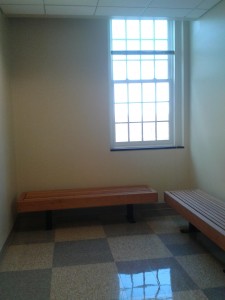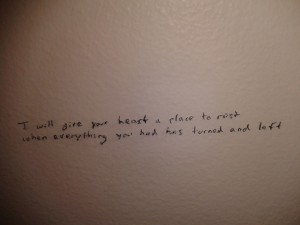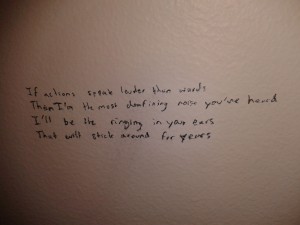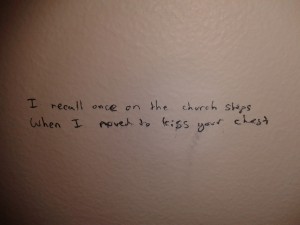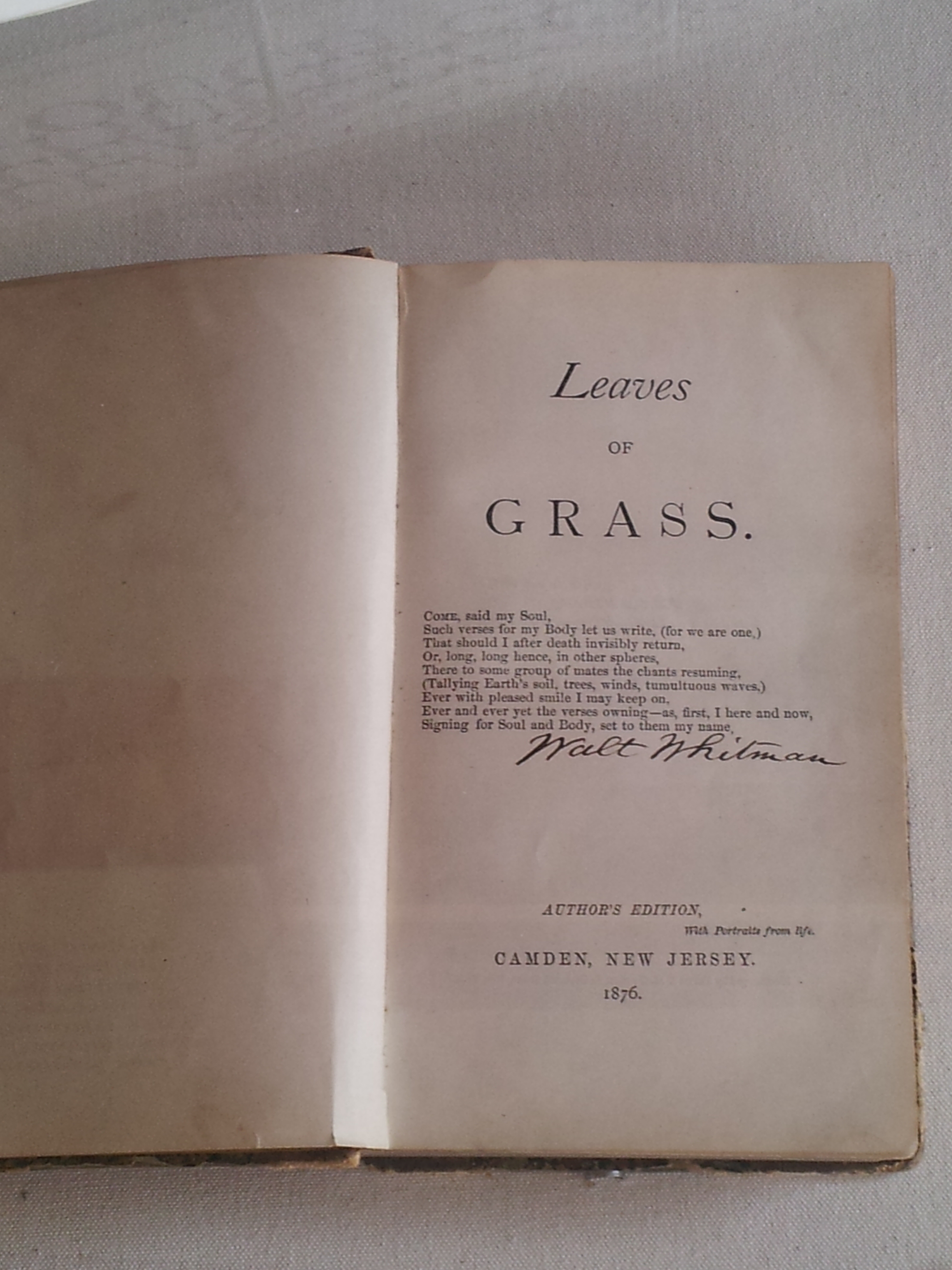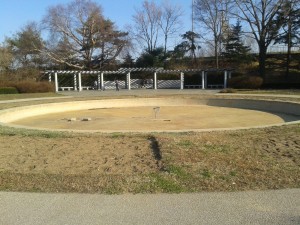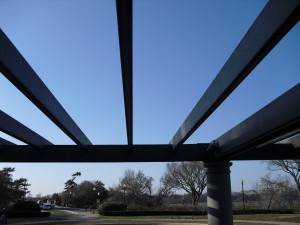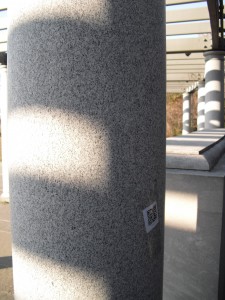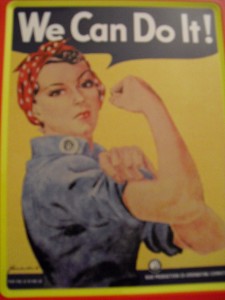So I tried doing going to do something different for this assignment and I hope that’s all right. My plan was to map three places at once, all of which have unique significance to different people in different ways, but which don’t usually go marked or shared. I was going to place my QR code in a book–The Odyssey by Homer, to be precise–but, as you who are seeing it just now must be aware, that didn’t happen. Our class assignment was to place our code somewhere of significance where others might see, and I argue that this is such a spot–even if the passers-by may be fewer and further between and the significance is not one clear reason. (To anyone who may have stumbled across this little “bookmark,” so to speak, I’m quite thrilled to meet you, it is a pleasure, and please do leave a comment!)
This place, this book, this particular passage (I had intended to mark) is a place of great significance and, for me, it has a story, for it is where I became an English major.

The scene of the crime, so to speak, where I discovered where I was an was not meant to be.
All who have had class with me know of my affection for Holmes and Dracula, but Odysseus was my first love and–ironically enough–my reason for becoming an Archaeology major, as well. I was determined to find Odysseus’ lost palace on Ithaca. But, time after time and paper after paper in my Archaeology courses, I wrote not about the distinguishing features of the palace, which might allow the determined scholar to find it, but of Odysseus, the man and hero.
And so I found myself, in this library, chasing down yet another translation to compare in an effort to prove how Odysseus and Penelope represent the ideal of marriage–I realized I was a dreadful Archaeologist. Dreadful might even be too kind of a term.

On the positive side, chasing texts down on the shelves is far safer than running from giant boulders and punching Nazis. Though, I will have to try to remember our lessons on how to grab your hat as you side through closing doorways–I feel that might come in useful at some point.
I returned to college–on the verge of being too late in my undergraduate career for such a discovery–a beaten woman and confessed my terrible sin to my kindly advisor. Quite alarmingly–as I sat there, wiping the distressed tears from my cheeks–he leapt from his chair, ran from the office, and pounded on the other professor’s doors with the cry of, “You owe me $40!”
It soon became apparent that there had been a sort of betting pool in the Classics Department to see when I would discover my mistake–one they had all realized within my first weeks in their courses, but which they were too polite to make mention of. They knew, as now do I, that being told you aren’t right for the job isn’t quite the same as suddenly realizing where you belong. Given the choice, it is far better to experience the latter.
So, this is where I belong. Don’t misunderstand–I’d still love to see Odysseus’ palace discovered someday (perhaps, you, whoever you are who found my code, if you are looking for something to do, can find it for me?) and it would be nice if my Homeric and Attic Greek and Latin didn’t go to waste–but, really, this is where I belong. Here, in a library, buried in a book, rather like my QR code. I hope everyone finds their place too–especially if it puts another place on the map: Odysseus’ palace.

A post-it note really works quite well for this sort of thing. Goodbye QR code! Let me know how life treat you!
But, please, before you go, my dear reader, would you do me one last favor? You’ve been so kind to listen to me all this time, but there is something I must ask of you: If it’s there, The Odyssey by Homer, could you move this little bookmark into it? I won’t ask you to find the right page, that would be too much, but perhaps you could just move it over? Thank you! You see, upon arriving to place my code in the book I found my fears realized–no book! All the copies remained out in the world having adventures of their own and, I hope, inspiring others. What’s a girl to do? So I did the most sensible thing I could: I plucked the best copy of criticism on The Odyssey from the shelves (the one you now hold) and tucked my code in between an article on homecomings and Penelope as wife and partner. That feels quite proper to me. Perhaps not ideal, but quite proper all things considered.
Oh, and what of the passage? For you, who has the book near at hand, it’s right there–no, no, not there, a little further in, now up a bit… yes, there you are. It’s the passage where Odysseus, barely alive and naked, implores the white-armed Nausicaa and her handmaiden’s for aid. Our–or mine, at least–hero, that noble philanderer (though, pray, let us forgive him for the moment)–appeals to them as a husband who misses his wife and home:
For nothing is greater or finer than this,
When a man and a woman live together
With one heart and mind, bringing joy
To their friends and grief to their foes.
I love that line. It is precisely what Penelope and Odysseus do–even hundreds of miles away from each other and years apart–they live their lives together, as one unit of one mind and one heart, using their clever, quick wits to the defeat of their enemies and for the pleasure of their friends. And I strongly suggest you find Stanley Lombardo’s translation, which captures the essencial meaning of the Greek and the sound and rhythm of the language. If you were just flipping through the book when you found my code, I hope I’ll have convinced you to read the Odyssey after all and if you haven’t read it, I hope my post will act as a map and help you to find it.
P.S. When did they install this thing and, really, a celebration of Pi?

It’s dedicated to Pi. I really hope it opened on 3/14. And there we have it; I ended up documenting a monument of significance rather than my book after all.

